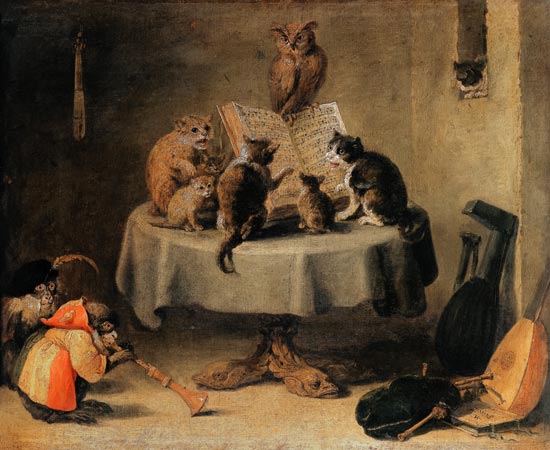One consequence of such genius and entree was that David Teniers was also a great curator (assuming there is a difference between curator and artist, which actually there is not.) Here is what the Courtauld has to say:
David Teniers the Younger (1610-90) was already a successful painter when in 1651 he was appointed court artist to the Governor of the Southern Netherlands (comprising most of modern Belgium). His new patron was the Hapsburg Archduke Leopold Wilhelm, cousin of King Philip IV of Spain. During the single decade of his governorship (1646-56) Leopold Wilhelm formed one of the greatest art collections of his age, and Teniers effectively became its curator. Leopold Wilhelm’s collection came to number approximately 1,300 works, including paintings by Holbein, Pieter Bruegel the Elder, Van Eyck, Raphael, Giorgione, Veronese and more than 15 works by Titian. This exceptional accumulation of masterpieces now forms the heart of Vienna’s Kunsthistorisches Museum
The picture below is " Archduke Leopold Wilhelm in his Picture Gallery in Brussels" (1651) and we see here the artist boasting about himself and complimenting his patron. We read that the picture below could also serve as a inventory, and shows both the Archduke and Teniers.

Confidence in one's talent and the appreciation of others meant that one could tease, and here we have a jest on the part of the David Teniers the Younger.

In a biography of this artist we learn of shadows in his last years:
.... Vlieghe goes on to clarify how Teniers rose to become court painter to the Habsburg governors in Brussels, and the means used by the artist to achieve greater social recognition, which included extensive self-representation and considerable conspicuous consumption. Teniers’s later years were marred by difficulties, brought on by his diminishing success as an artist and by financial difficulties with his children. Vlieghe shows how these circumstances led to Teniers dying in rather deplorable circumstances.
I am not sure what this means.
I am not sure what this means.
No comments:
Post a Comment